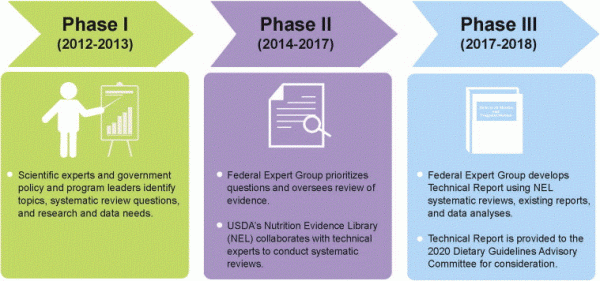By Kellie Casavale, PhD, RD, Nutrition Advisor and Amber Mosher, MPH, RD, Senior Fellow, Office of Disease Prevention and Health Promotion
When it comes to eating for health, it’s important to make food choices that are backed by robust scientific evidence, packed with essential nutrients, and that can help to prevent us from getting sick. For infants, one food that meets all these requirements is breast milk. During National Breastfeeding Month, we are excited to highlight the Birth to 24 Months and Pregnancy Project, which aims to advance the knowledge base on what is known about the impact of how we feed our babies and health. Breast milk is an important subject in this review.
At the Office of Disease Prevention and Health Promotion (ODPHP) within the U.S. Department of Health and Human Services (HHS), we’re passionate about the work we do each day to help all Americans reach their highest standard of health. One of our major initiatives – the Dietary Guidelines for Americans – has been the Nation’s go-to source for science-based nutrition advice for over 30 years. ODPHP partners with the Center for Nutrition Policy and Promotion (CNPP) at the U.S. Department of Agriculture (USDA) to develop each edition of the Dietary Guidelines, which is published every 5 years.
To date, the Dietary Guidelines has provided nutrition guidance for adults and children ages 2 years and older due to the unique nutritional needs, eating patterns, and developmental stages of children from birth to 2 years (24 months) that pose challenges to creating population nutrition advice with adequate scientific evidence. Similarly, pregnant and breastfeeding moms have distinct needs that have been addressed in the Dietary Guidelines, however, not with a comprehensive focus.
To ensure that future editions of the Dietary Guidelines include guidance for Americans of all ages and life stages, ODPHP and CNPP have undertaken the Birth to 24 Months and Pregnancy Project to begin a review of the evidence on nutrition and health for these groups. Congress also enacted a law requiring these groups be included in the 2020 Dietary Guidelines. This initiative will follow a rigorous evidence-based process informed by a broad range of experts in the field of nutrition and health of young children and women who are pregnant, including pediatrics, psychology, and economics. The project includes three key phases of work, as shown in the figure.

Beginning with the ninth edition of the Dietary Guidelines for Americans, expected in 2020, this policy will be expanded to address the needs of infants and toddlers (from birth to age 2 years), as well as women who are pregnant. This critical expansion of the Dietary Guidelines will help ensure that the path to healthy eating starts as early as possible in life.